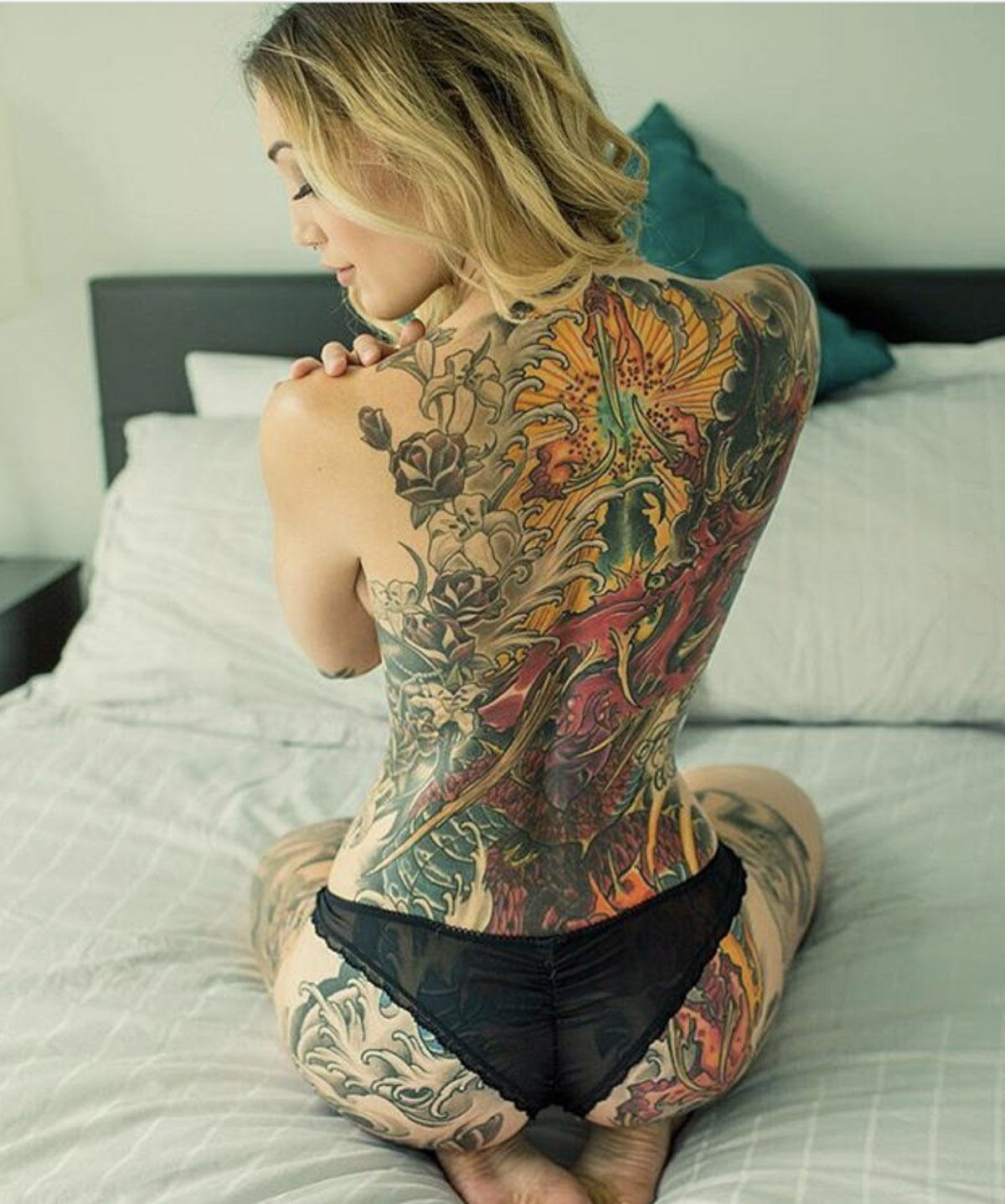From his Craftsman Tattoo Parlour studio in White Rock, Canada, Clint Danroth continues the legacy of a North American school that blends Western culture and Asian imagery in a highly dynamic and colourful style.

Can you tell me a bit about yourself? Where are you from? How old are you?
My name is Clint Danroth, I'm 47 years old and own Craftsman Tattoo Parlour in White Rock B.C. Canada, which I opened in 1998. I have been tattooing since 1995, and love doing large scale dynamic illustrative work which borrows from the oriental influence quite heavily.


When did you start?
I started tattooing when I was 20 years old, so although I have never really done anything else for work - I was originally in university for Journalism and felt that writing as well as art and drawing were huge passions for me.


What happened ?
I did drop out of school when I was 19 as I couldn't see myself as a journalist and, although I had been drawing since I was a toddler, i couldn't see a career in it. I did love tattoos though, I had been tattooed early on, 15 years old, and the tattoo scene back then was way different… Bikers, rednecks and blue collar types were the only ones getting tattooed back then and were also the only ones doing tattoos… there didn't seem any way I could get into the industry myself. As much as I loved to draw back then, I wasn't part of that scene, and just even getting tattooed was an intimidating experience.


How did you find your way in tattooing ?
In Canada, during this period, 1994, we were experiencing recession and work was hard to come by, I had been living on my own since i was 17 so had to support myself - which was incredibly difficult at this time. So, after dropping out of Journalism, I began drawing a lot more, and made a little money drawing for bands and nightclubs. Eventually a local tattooer saw my artwork and needed an apprentice, it blew me away, and jumped at the opportunity.


What were your graphic influences at the time, were you reading comics?
I always found that I was attracted to more dynamic styles of illustration like comics, anime and artists from the 70’s and 80’s such as Frank Frazetta. Custom tattooing during this era was not very widespread, and I found increasingly frustrated that clients wouldn't allow me to draw them original work, only wanting flash designs. So, I slowly started altering these designs and becoming more and more attracted to Japanese work. The flow and depth of this artwork really spoke to me, but in Western Canada, the biker lifestyle was dominate in tattooing, and I found most guys wanted this Japanese style to have more attitude. Eventually I found I had a knack for this style and, in my neck of the woods, this style eventually became known as “Greaseball Japanese”. A combination of biker style skulls, demons sexy woman and iconic Japanese imagery.


How did you get into this style?
Over the years, I have constantly worked in this style, trying to incorporate movement and dynamic flow of Japanese with more of a Western flare, and over the years found others that were also doing this style, many of whom have influenced me greatly. Tattoo giants such as John the Dutchman, Paul “Smiling Buddha” Jeffries and of course the godfather Dave Shore, all had big parts in my development as an artist. My years working at Dutchman Tattoos afforded me the pleasure of working with some amazing peers such as Dustin Kroetsch, Rob Hope, Ryan Halter and Jessy Young, all of us creating this style of tattooing in our own way. As far as my own ideas behind illustration go, I love to incorporate lots of flow and whole heartily believe in utilizing the concept of one thirds two thirds theory, or golden ratio. This idea is a more mathematical way of composing artwork, but allows me to using line weight effectively as well as colour theory and proper composition. I believe this theory to be a universal law and every tattoo and piece of art I create I try to utilize this to the best of my ability.


One of your clients unfortunately deceased since, Chris Wenzel, had part of his skin removed after his death, a skin tattooed by you. You had the opportunity to see it, how did it feel to have your work exposed in this way?
Tattooing has truly enhanced my life, almost saved it at one point. It has brought many experiences and characters into my life and one of these people was a hard working grinder named Chris Wenzel. I met Chris years ago through the convention circuit and really was one of the most humble, hard working tattooers I've ever met. Eventually I tattooed him on one of his guest spots to my shop, a fun Oni on his thigh. Unfortunately Chris passed away a number of years ago, and as part of his last wishes, he had asked his widow to have his skin preserved. Chris’s tattoos went into the Guinness book of world records as the largest amount of skin ever preserved in this way, and really was an incredible thing… I remember seeing the work I had done on him, framed along with some other really talented artists and thinking how wild it was that something I could create could last a lifetime like this and how honoured I was to tattoo him, have the trust from him as well as all my clients to add my creations to them for their lives. + Instagram : @cdanroth Craftsman Tattoo Parlour 15561 Marine Dr, White Rock, BC V4B 1C9, Canada www.craftmantattoos.com











